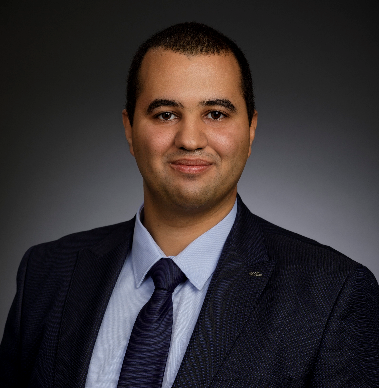Thousands of lives could be saved with the ability to detect a concealed weapon within .5999 seconds. Mathias Echi, a senior Computer Science student, working under the mentorship of Dr. Ahmed Ahmed has developed a Smart Surveillance System that can do just that using the principles of the Internet of Things, or IoT.
Dr. Ahmed Ahmed, Assistant Professor in the Department of Computer Science, earned funding from the National Science Foundation (NSF) that will increase the learning capabilities both at PVAMU and at other HBCUs. The funding will provide for the development of an IoT Innovation Laboratory, and IoT learning modules that will be integrated into Computer Science courses. There are also plans for IoT competitions with other HBCUs.
“IoT is considered a rising star in the sky of innovative and smart technologies. IoT is everywhere in our daily life from homes to work. IoT is the future for all of us”. Dr. Ahmed, working with Co-Principal Investigators Drs. Kiranmai Bellam and Yonggao Yang, received $399,931 for their project: Targeted Infusion Project: Infusing Innovative IoT Technologies into the Computer Science Curriculum at Prairie View A&M University. The project is funded for three years, during which their foundational and practical approach will arm students with real-world and hands-on skills that will position them as experienced professionals when they transition into the job market. Ahmed states, “With IoT devices becoming increasingly ubiquitous, our students will be capable of applying the tremendous potential for innovative IoT applications across a wide variety of domains, including healthcare, agriculture, entertainment, environmental monitoring, and transportation.”
As of 2020, there are over 20 billion devices connected to the internet using easily accessible computer chips and wireless internet. These devices operate in real-time, accessing data that can be used for things as simple as turning on a lightbulb using an app on a cell phone, or informing a farmer that the crops need water. Graduate student Suhlo Al Omari did just that. He developed a device that measures the moisture in the soil, and using a cell phone app, watering, could be started. Vice President for Research & Innovation, Dr. Magesh Rajan, states, “Our faculty and students are at the core of developing the innovation ecosystem. The culture of entrepreneurship can take the discoveries and innovation from classrooms and laboratories to the real world where it will impact lives. The Division of Research & Innovation’s new I-CEED initiative will serve faculty, students, and staff throughout the process of discovery and invention — inspiring an innovation ecosystem, commercialization, entrepreneurship, and economic development”.
Beginning in the fall of 2020, the team will infuse two courses on IoT into the Computer Science curriculum, eventually developing eight modules that cover various aspects of IoT. Their novel approach is holistic, in that they are not merely integrating a single course, but all Computer Science majors will include at least three IoT experiential learning modules. Students will also have access to the Smart IoT Innovation Lab, where they will build prototype IoT apps and learn firsthand about privacy and security issues that must be addressed in the development process.
In 2021, Prairie View will host IoT competitions with other HBCUs and MSIs. Alabama State University, Tuskegee University, and Texas Southern University are among the schools that have committed to participate in the events. The NSF funding will provide expenses for a faculty member and four students to participate.
Ahmed states, “The rapid growth of IoT applications has increased the demand for experienced professionals with strong IoT hands-on skills. This Targeted Infusion Project (TIP) will improve undergraduate computing education through enhanced courses and research opportunities. It will promote IoT research and learning experiences so that underrepresented students are funneled into STEM graduate schools and careers.”
In the age of Alexa, Google, Nest thermostats, surveillance cameras, and an app for everything, in less than one second, we can make real-time connections that have a global impact.
Contributed by Karen B. Cotton
###


